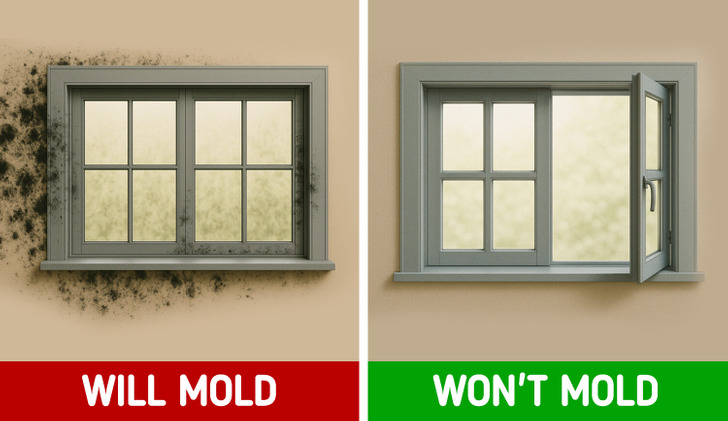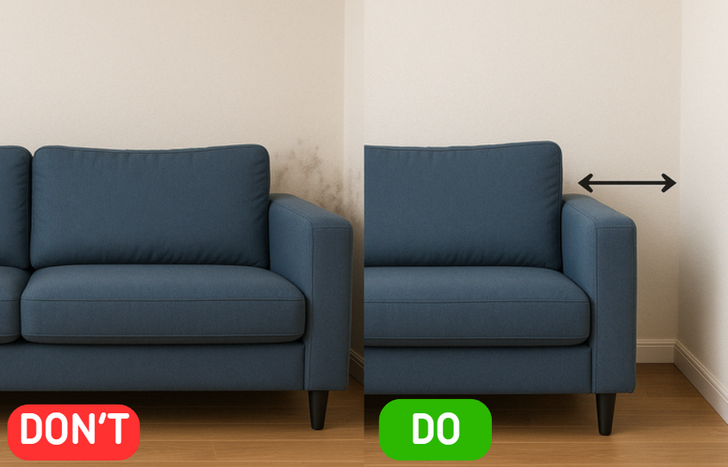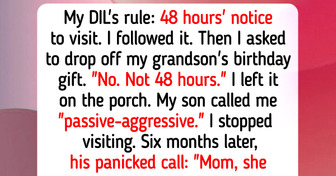20 People Whose Guardian Angel Came in Human Form


Black mold is more than just an eyesore—it can also pose serious health risks and damage your home if left unchecked. Understanding what causes black mold is the first step toward keeping your living space clean and safe. In this guide, we’ll explore the common triggers and share 6 effective ways to prevent it from taking hold in your home.
Without fresh air circulating through your home, humidity builds up fast. This moisture, especially in winter when temperatures fluctuate, causes condensation on cold surfaces. Over time, water droplets can soak into walls and ceilings, creating damp patches—perfect for mold.
Mold is a fast-growing fungus that feeds on wood, carpet, dust, and other materials. It damages your home and can harm your health, even after it's been cleaned, since dead spores can still cause issues.
Here are some simple tips to help you keep mold out of your house:
Condensation is one of the biggest culprits behind mold in the home. Mold forms from airborne spores and thrives in warm, damp, poorly ventilated spaces—making kitchens and bathrooms common trouble spots.
One major contributor? Drying clothes on indoor radiators. Not only does this create excess moisture in the air, but it also makes your heating less efficient. If outdoor drying isn’t an option, try drying clothes in a room where you can crack a window to let the moisture escape. Also, make sure your washing machine or tumble dryer is properly vented to prevent extra humidity from building up indoors.

During winter, pets spend more time indoors—bringing more fur, dander, and moisture into your home. This can trigger allergies and even contribute to mold-friendly conditions.
To help, bathe your pets regularly and wash their bedding often. You can also limit their access to certain rooms to keep the mess and moisture under control.

After a shower, bath, boiling a kettle, or cooking, humidity levels in your kitchen or bathroom can skyrocket. Without proper ventilation, this moisture can turn into condensation, affecting the whole house.
To prevent this, avoid closing doors while using the bathroom or kitchen. Opening a window afterward allows excess moisture to escape without disturbing the temperature elsewhere in the house. This helps reduce condensation on walls, ceilings, and windows—but won't eliminate the problem entirely.
If you don’t have hardwood floors, your carpets could be harboring dust mites, dirt, hair, and even fungus. These can trigger asthma, bronchial issues, hay fever, eczema, and cause unpleasant odors, lowering your home's air quality.
In high-moisture areas like bathrooms or kitchens, consider replacing carpet with tiles or laminate to prevent mold and dust mites from thriving. If you prefer to keep the carpet, make sure to clean it regularly and maintain good ventilation to reduce humidity levels.

Don't overfill bedroom wardrobes or kitchen cupboards. Packed cupboards trap moisture and prevent air circulation, creating the perfect environment for mold.
Similarly, leave at least 50mm of space between furniture and walls to allow air to flow freely. In bedrooms, place wardrobes against internal walls rather than external ones, as internal walls are less likely to get as cold, reducing the risk of condensation and mold growth.
Mold thrives on moisture, so it’s important to manage any water from leaks, rainfall, or spills as soon as possible. Even wiping down walls and tiles after a shower or bath can help prevent mold from taking hold. Keeping moisture in check is key to avoiding mold growth.
Regular maintenance, smart habits, and quick responses to water buildup can go a long way in creating a healthier, more comfortable living space. Keep moisture in check, and mold won’t stand a chance.











